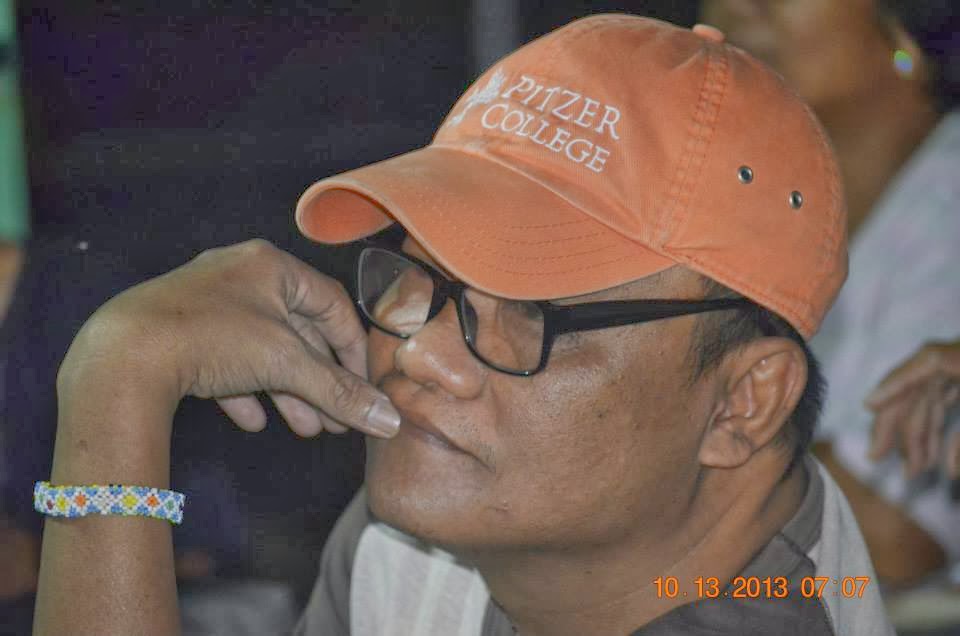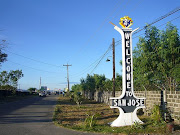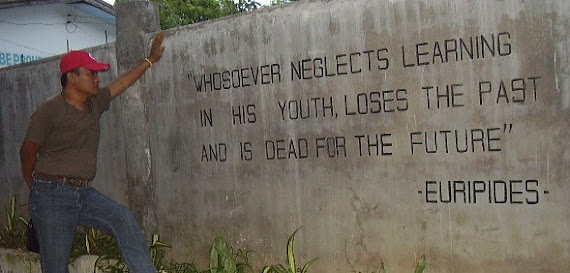
Maybe due to my blogger’s instinct, whenever I see new things and places, I always find a way how to connect them to people and things that I love and cherish. I, together with my wife and the other 14 couples, my sisters and brothers from Brotherhood of Christian Businessmen and Professionals (BCBP) from chapters and outreaches in San Jose and Sablayan in Occidental Mindoro and Nasugbo and Batangas City in Batangas, participated in what we call as Brotherhood Christian Marriage Retreat or BCMR. The event was held in Tagaytay City from February 24 to 26, this year.
The most unforgettable and everlasting symbol of my oneness with Vicky, my wife, a Christian, is a scapular (forgive my brothers and sisters for I cannot awkwardly call her my “Christian Wife” because it connotes that I have other wives, “Protestant Wife”, “Agnostic Wife”, “Atheist Wife”, etc. I am more comfortable in introducing her this way: “This is Vicky, my wife, a Christian.” This is more grammatically correct, isn’t it? ). That piece of cloth that I kept in my wallet for more than 20 years now was her first gift to me. Wherever I go that fine little fabric goes with me, not for its religious or spiritual purposes but to me, it is the symbol and a reminder of her love and faithfulness, then and now.
I was 30 and she was 29 when we exchanged vows officiated by Rev. Fr. Mario Veloso that beautiful morning of June 27, 1992 but before that almost silent but unhesitant utterance of our “I do’s”, that tiny scapular have been lost three times. I lost it in three distinct and environmentally-opposed places. I lost it the first time in a beer joint in Lucena City but the waiter kept it and returned it to me the next morning. For the second time, I lost it in an indignation rally in support with the victims of human rights violations in Calamba but another activist from the youth sector luckily found it and returned it to me immediately. And last time around, Vicky and I lost our scapular inside the San Jose Cathedral one afternoon but when we came back the next day, we found it on the floor of that particular spot in the building. Our brown little thing was covered by vougainvilla flowers that luckily Melchor, the Cathedral’s errand boy, hadn’t swept and threw in a trash can. Can you imagine that? Three times and still being recovered? Like problems we have encountered during our marriage life, they come but they always go. Since then I realized that not only that brown scapular really belongs to me forever but also Vicky, my wife, a Christian.
My relationship with Vicky can somehow be compared or connected to our little scapular. It is colored brown who said to be, according to a Filipino folklore, a perfect skin complexion. It has two dangling pieces, one at the back and one in front. Just like our personal characteristics, some are open and some are hidden. Our relationship is somewhat already time-tested just like scapulars worn by the old devotees in churches whose faith cannot be defeated by time.
I am not in the liberty to divulge everything we have experienced at BCMR. True enough for it would only spoil the surprises it brings like what Bro. Edward Bagatsolon constantly reminding us that chilly days and nights in Tagaytay. All I can afford to do is to echo Bro. Mannie Rosales, “Being [t]here is a blessing!”
As I have told you, whenever I see new things and places, I always find a way how to connect them to people and things that I love and cherish. Our brown scapular and the venue of our BCMR have indeed "connectivity". To let you know, we stayed at the Carmelite’s Missionaries’ Center for Spirituality.
Yes, we experienced the wonder and blessings of BCMR in a Carmelite Retreat House with a Carmelite scapular in my wallet. You call it coincidence? No, I call it faith…
--------
(Photo: BCBP- San Jose Chapter File)







